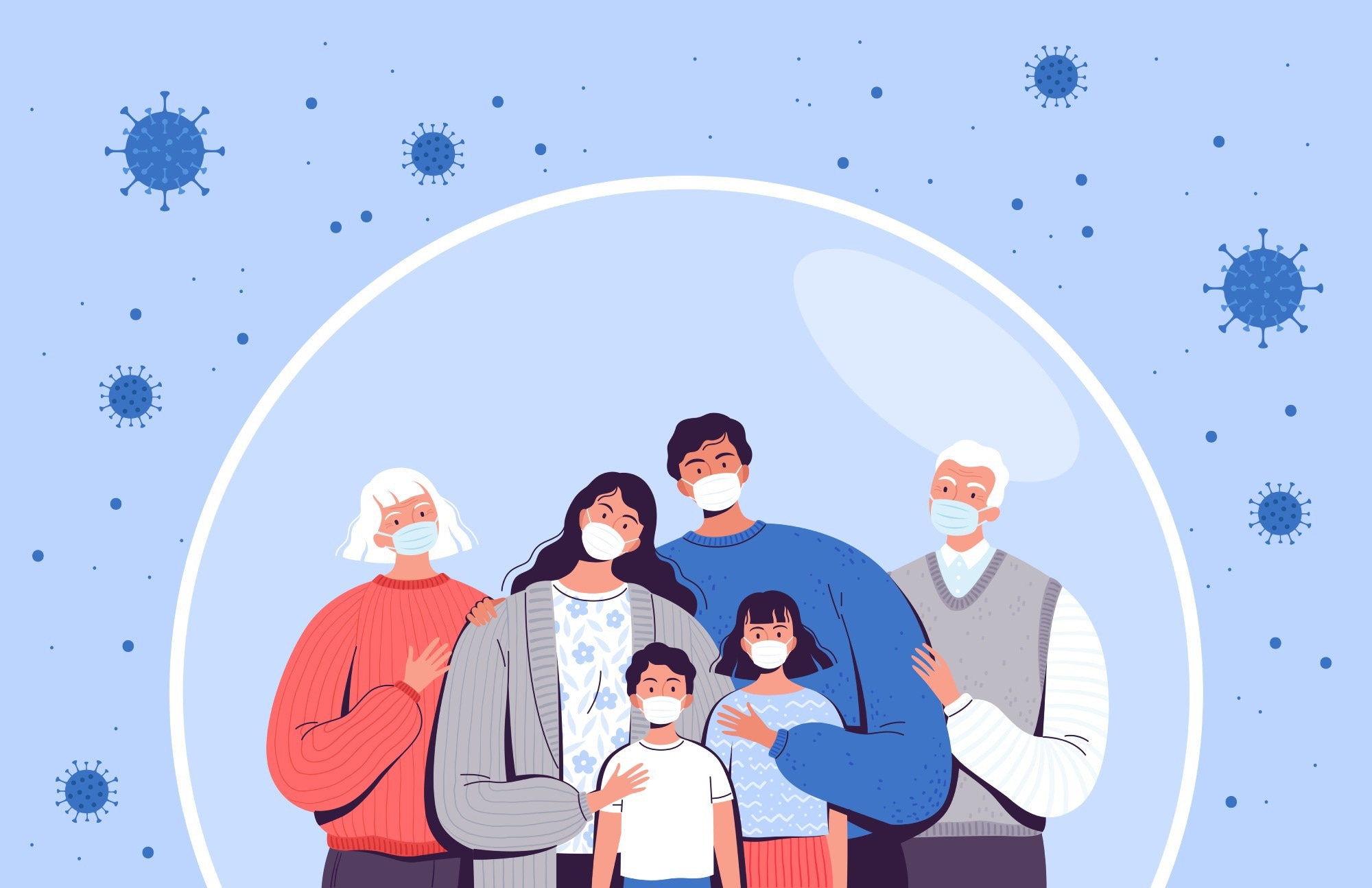In a recent study published in Eurosurveillance, researchers investigated whether the mass vaccination of the adult population of Schwaz, Austria, against severe acute respiratory syndrome coronavirus 2 (SARS-CoV-2) conferred an indirect protective effect on the proportion of unvaccinated children in the general population.
 Study: Can high COVID-19 vaccination rates in adults help protect unvaccinated children? Evidence from a unique mass vaccination campaign, Schwaz/Austria, March 2021. Image Credit: Oqvector/Shutterstock
Study: Can high COVID-19 vaccination rates in adults help protect unvaccinated children? Evidence from a unique mass vaccination campaign, Schwaz/Austria, March 2021. Image Credit: Oqvector/Shutterstock
Background
Vaccination efforts against SARS-CoV-2 during the early stages of the coronavirus disease 2019 (COVID-19) pandemic focused on immunizing the high-risk groups, which included the elderly population and individuals with comorbidities.
Subsequently, the vaccinations were made available to large sections of the adult population, but the younger populations in many countries remained unvaccinated till late 2021. Even when vaccines were made available to children, the lack of clarity about the vaccine's potential risks kept parents from getting their children immunized.
The district of Schwaz in Austria had about 70% of its adult population vaccinated during the predominance of the Beta variant of SARS-CoV-2 as the Comirnaty vaccine (BioNTech-Pfizer BNT162b2 mRNA vaccine) had been made available to all its adult residents. Schwaz presented an ideal setting to test whether vaccination of large portions of the adult population resulted in population immunity and provided indirect protection to the unvaccinated younger population.
About the study
In the present study, the researchers studied the effects of a rapid mass vaccination campaign carried out by the Austrian government in the district of Schwaz after the outbreak of the SARS-CoV-2 Beta variant.
As part of the campaign, the government gave the district a hundred thousand extra Comirnaty vaccine doses. By the end of the first week, almost 70% of the adult (16 years or older) population had received the vaccine. The other districts, in contrast, had only achieved 10% vaccination coverage. The proportion of unvaccinated children below 16 years of age, however, remained the same in Schwaz and its neighboring districts.
The study compared two age cohorts in Schwaz and the same in other districts. One age cohort comprised unvaccinated children below 16 years of age, and the other cohort contained adults between the age of 16 and 50 — the age group most likely to interact with children. All recorded infections according to the age group were considered the outcome variable.
In the first part of the analysis, the researchers compared the two cohorts in Schwaz with the cohorts in a synthetic control group, which consisted of districts with similar pre-vaccination campaign characteristics as Schwaz. These characteristics included population, geographical area, the spread of COVID-19 before the mass vaccination campaign, and the number of municipalities in the district.
In the second part of the analysis, the age cohorts in Schwaz were compared to those in the municipalities bordering Schwaz that were not included in the mass vaccination campaign, using a difference-in-difference (DID) design. The number of infections per 100,000 younger (below 16 years of age) residents was considered the dependent variable.
Results
The results indicated an increase from 5% to 60% in the vaccination coverage among the 16- to 50-year-old individuals was followed by a 40 to 60% reduction in SARS-CoV-2 infections among children in Schwaz, compared to the control districts.
The first set of analyses found that the second dose of the mass vaccination campaign in Schwaz had brought about a 57.4% reduction in cumulative daily SARS-CoV-2 infection among the adults between 16 and 50 years of age and a 42.8% reduction in daily COVID-19 infections among children below 16 years of age.
The second part of the analysis that compared the cohorts in Schwaz with those in neighboring municipalities also found that after the second dose of the mass vaccination campaign, the number of SARS-CoV-2 infections among both cohorts in Schwaz was significantly lower than that in the two age cohorts in the bordering municipalities. The DID regression analysis revealed a 75.1% reduction of new SARS-CoV-2 cases in adults and a 64.5% decrease in new cases among children in Schwaz, relative to the neighboring municipalities.
The authors mentioned some limitations to the study, including the fact that the study was not a randomized clinical trial but an observational study. Additionally, the study was conducted during the predominance of the Alpha variant and the emergence period of the Beta variant. The results might not be transferable to other variants, such as Omicron, as the efficacy of the Comirnaty vaccine differs against emergent variants.
Conclusions
To conclude, the study revealed that vaccination of an extensive portion of the population could result in population immunity and grant indirect protection to the unvaccinated section of the population. While vaccine efficacies differ against different variants of concern, the findings on indirect protection might be relevant for regions with similar vaccine coverage as Schwaz.